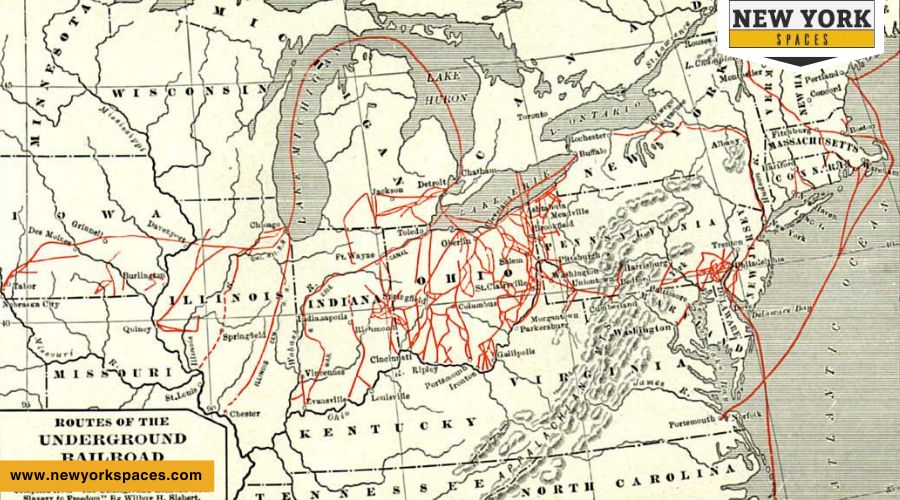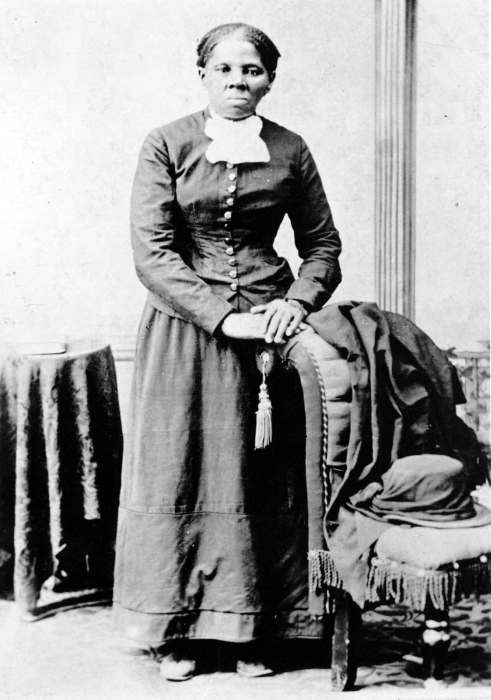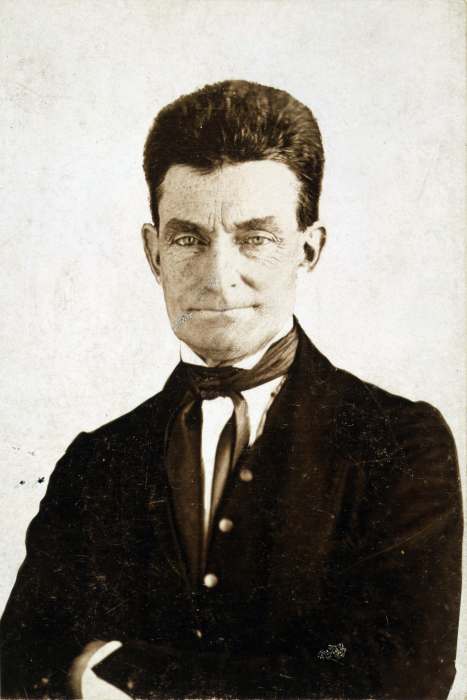The Underground Railroad represents one of the most significant chapters in American history, symbolizing the relentless struggle for freedom and the abolition of slavery. While many states played a role in this clandestine network, New York’s contribution was particularly noteworthy due to its strategic location, active abolitionist community, and complex socio-political landscape. This blog post delves into New York’s critical involvement in the Underground Railroad, exploring the unique factors that made the state a linchpin in the quest for liberation.
Understanding the Underground Railroad
The Underground Railroad, a term that evokes images of subterranean passages and steam-powered locomotives, was a far more complex and human-driven network. It was an organized system of secret routes and safe houses that spanned the United States, leading to Northern free states and Canada. This network was not marked by visible signs but by the courage and ingenuity of those who operated and used it.
The Essence of the Network
Secret Routes: These were paths through forests, rivers, and back roads. The routes were often indirect to avoid detection, changing frequently based on threats from slave catchers and bounty hunters.
Safe Houses: Also known as “stations” or “depots,” were homes and businesses where fugitives could rest, hide, and receive food and medical care. Owned by abolitionists or sympathizers, these places were integral to the network’s success.
Conductors: Individuals who guided fugitives along the Underground Railroad. They were often free blacks, sympathetic whites, and sometimes formerly enslaved people, like Harriet Tubman, who risked their lives to lead others to freedom.
Symbols and Codes: The network used a variety of signals and codes to communicate. Quilts with specific patterns, songs with hidden messages, and coded language helped guide fugitives and protect the secrecy of the routes.
New York’s Strategic Importance in the Underground Railroad
Geographic Advantage
New York’s geography offered several natural and strategic advantages that made it a key hub in the Underground Railroad:
- Proximity to Canada: With its long border with Canada, New York was the last leg of the journey for many escaping slaves. The promise of freedom just across the border made New York an essential destination.
- Waterways as Pathways: Rivers and lakes, especially the Hudson River, served as navigational aids. These waterways not only provided routes that were difficult for slave catchers to monitor but also supported travel by boat, a faster and safer mode of transport.
- Mountainous Terrain and Forests: The Adirondacks and other forested areas offered cover and shelter, allowing fugitives to move relatively undetected through the state.
Economic Influence
New York’s economy played a dual role in the operation of the Underground Railroad:
Maritime Industry: The bustling ports of New York City and other coastal towns were central to its economic vitality. These ports became critical points for the escape, as fugitives could hide among the goods and people, board vessels bound for Northern cities or Canada, and find employment on ships or docks to aid their escape.
Employment Opportunities: New York’s economy was diverse beyond the ports, offering jobs in various sectors. Escaped enslaved people could find work, blend into free black communities, and save money for the final leg of their journey to Canada.
Support from the Business Community: Some members of the New York business community, who were sympathetic to the abolitionist cause, provided financial support, jobs, or other resources to assist the Underground Railroad operations.
The interplay between New York’s geographical features and economic dynamics created a conducive environment for the Underground Railroad. The state’s natural landscape provided cover and routes for escape, while its economic prosperity, particularly in maritime trade, offered both a means of survival and a pathway to freedom. This unique combination of factors helped cement New York’s pivotal role in this historic liberation network.
Distinguished Figures in New York’s Underground Railroad
The Underground Railroad’s success in New York can be largely attributed to a network of dedicated individuals who risked their lives and resources to fight against the institution of slavery. This section highlights the significant contributions of key abolitionists within New York, shedding light on their roles and their impact on the freedom movement.
Harriet Tubman: The Conductor of Freedom
- Background: Born into slavery, Harriet Tubman escaped to freedom in the North in 1849. Her relentless courage and determination to free others made her one of the most celebrated figures in American history.
- Role in the Underground Railroad: Tubman made 13 missions into the South, guiding over 70 enslaved people to freedom. Her intricate knowledge of the network’s routes allowed her always to retain a passenger.
- Legacy in New York: Tubman settled in Auburn, New York, where she continued her abolitionist activities, helping formerly enslaved people find jobs and settle into free life. Her home symbolized hope and a testament to her unwavering commitment to the cause.
Frederick Douglass: The Voice for Freedom
- Journey from Slavery to Activism: Douglass escaped from slavery in Maryland and rose to prominence as an eloquent speaker and writer, advocating for the abolition of slavery and equal rights for all.
- Influence in New York: Residing in Rochester, Douglass’s home served as a station on the Underground Railroad and as a center for abolitionist strategy. His newspaper, The North Star, was instrumental in spreading the abolitionist message and mobilizing support.
- Contribution to the Cause: Douglass’s powerful oratory skills and publications played a pivotal role in changing public opinion about slavery and the rights of African Americans.
Gerrit Smith: The Philanthropic Supporter
- Wealth for a Cause: Smith, one of the wealthiest men in New York, dedicated much of his fortune to anti-slavery activities, including the Underground Railroad.
- Sanctuary in Peterboro: His estate in Peterboro became a haven for fleeing slaves. Smith’s financial support extended beyond his estate, funding abolitionist causes and aiding escaped enslaved people throughout the state.
- Legacy of Generosity: Beyond his involvement in the Underground Railroad, Smith’s philanthropy supported educational opportunities for African Americans, further cementing his legacy as a champion for freedom and equality.
John Brown: The Militant Abolitionist
- Beyond the Underground Railroad: While Brown is most known for his violent opposition to slavery, particularly the 1859 raid on Harpers Ferry, his activities in New York were crucial to the Underground Railroad.
- A Safe Haven in North Elba: Brown’s farm in North Elba served as a refuge for escaped enslaved people, demonstrating his commitment to the cause through direct action.
- Impact on the Movement: Brown’s radical approach to ending slavery inspired many abolitionists in New York and across the country, highlighting the diverse tactics within the abolitionist movement.
These individuals, among many others, formed the backbone of the Underground Railroad in New York. Their varied contributions—from direct action and financial support to public advocacy and political activism—demonstrate the multifaceted nature of the abolitionist movement. Together, they created a legacy of courage and compassion that changed the lives of countless individuals and the course of American history.
The Crucial Support of Free Black Communities in New York
In the intricate tapestry of the Underground Railroad, free black communities across New York stood out for their unwavering support and strategic involvement. These communities, flourishing in urban centers such as New York City, Albany, Syracuse, and Rochester, offered more than just refuge; they provided a comprehensive support system vital for this clandestine network’s operation.
A Network of Safety and Solidarity
Urban Sanctuaries: In the bustling streets of New York’s cities, free black communities established themselves as beacons of hope for those fleeing the shackles of slavery. The dense populations and the dynamic urban environment allowed fugitives to blend in, diminishing the risk of capture.
Social and Financial Support: Beyond the physical safety provided by these communities, they also offered social and financial assistance. This support ranged from employment opportunities and housing to clothing and food, crucial components for individuals who had left everything behind in search of freedom.
The Central Role of Churches
Churches within these communities emerged as pillars of the Underground Railroad, embodying roles that extended far beyond spiritual guidance.
Spiritual Havens and Strategic Hubs: Churches were not only places of worship but also served as strategic hubs for the Underground Railroad. They were places where messages were exchanged discreetly, plans were made, and information about safe routes was shared.
Meeting Points and Shelters: These sacred spaces offered physical sanctuary to those in need. Basements, attics, and hidden rooms within the churches became temporary shelters for fugitives on their journey to freedom.
Financial Aid and Resources: Church congregations pooled resources to support the cause. Collections and fundraising efforts within these churches provided the financial aid necessary to cover transportation, forge free papers, and support the broader needs of those escaping slavery.
The Impact of Free Black Communities
The role of free black communities in New York transcended mere assistance; they were integral to the fabric of the Underground Railroad, providing a multifaceted support system that included:
Education and Empowerment: Beyond immediate survival needs, these communities often focused on the education and empowerment of escaped enslaved people, helping them to integrate into free society and advocating for their rights and dignity.
A Culture of Resistance and Resilience: The active participation of free black communities in the Underground Railroad fostered a culture of resistance against the institution of slavery. This resilience aided individuals in their quest for freedom and contributed to the broader abolition and civil rights movement.
A Legacy of Freedom: The contributions of these communities have left a lasting legacy, highlighting the power of collective action and solidarity in the face of systemic oppression and injustice.
Navigating the Legal and Political Terrain
The antebellum period in New York was marked by a dynamic and often contentious legal and political climate, especially concerning the issue of slavery and the rights of escaped enslaved people. The state found itself at the crossroads of a moral and legal conundrum, navigating between its laws that sought to end slavery and federal mandates that aimed to enforce it.
The Legal Framework: A Dual Reality
State vs. Federal Laws: By 1827, New York had taken a progressive stance by abolishing slavery, making it a beacon of hope for many seeking freedom. However, this hope was tempered by the existence of federal laws, specifically the Fugitive Slave Acts of 1793 and 1850. These acts created a legal paradox where, despite being in a free state, escaped enslaved people could still be hunted and returned to bondage.
Impact of the Fugitive Slave Acts: The Fugitive Slave Acts not only empowered enslavers but also incentivized bounty hunters, making New York a dangerous place for fugitives. The acts required citizens to assist in the capture of escaped enslaved people and penalized those who aided in their escape, creating a climate of fear and suspicion.
The Spirit of Resistance
Public Outcry and Defiance: The enactment of the Fugitive Slave Laws met significant opposition in New York, igniting a spirit of resistance among its citizens. This opposition was not just vocal; many New Yorkers actively engaged in civil disobedience, defying federal laws in the name of human rights and dignity.
Risks and Consequences: Those involved in the Underground Railroad and other forms of resistance faced severe legal repercussions, including fines, imprisonment, and violence. Despite these dangers, the abolitionist movement in New York continued to grow, drawing support from a wide range of individuals, including free blacks, white abolitionists, and even some government officials.
Legal Battles and Advocacy: In addition to direct action, resistance in New York also took the form of legal advocacy. Lawyers and activists challenged the constitutionality of the Fugitive Slave Laws, representing escaped enslaved people in court and pushing for laws that would protect the rights of fugitives within the state. The legal battle was an uphill fight, but it played a crucial role in challenging the national conscience and laying the groundwork for the abolitionist movement.
The Impact of Resistance
A Network of Support: The resistance against the Fugitive Slave Laws helped to strengthen and expand the network of support for escaped enslaved people in New York. Safe houses, legal aid, and financial support became more organized as the risks associated with the laws galvanized more people into action.
Shaping Public Opinion: The active defiance against these federal laws also significantly shaped public opinion in New York and nationwide. The courage and moral conviction of those who resisted highlighted the inhumanity of slavery and the injustices of the Fugitive Slave Acts, contributing to the growing abolitionist sentiment.
A Legacy of Courage: The resistance in New York during the antebellum period left a lasting legacy of courage and commitment to justice. It demonstrated the power of collective action and the impact of standing firm in one’s convictions, even in the face of daunting legal and political challenges.
Exploring the New York’s Underground Railroad
The Underground Railroad in New York was a complex lattice of routes, each marked by stories of bravery, strategic ingenuity, and the pursuit of liberty. These routes, utilized by countless fugitives seeking freedom, highlight the geographic and human diversity of the abolitionist effort within the state. This section delves into the most notable routes and locations alongside the challenges and triumphs faced by those who traveled and maintained them.
Key Routes and Strategic Locations
The Hudson River Route: A Lifeline of Liberty
- Geographic Course: Stretching along the Hudson River, this pivotal route served as a main artery of escape from New York City to Albany, then veering westward toward Buffalo. Its path was marked by natural landscapes that guided and hid those on their journey.
- Strategic Importance: As one of the most heavily utilized routes, it leveraged New York’s waterways, essential for covert movement. The river provided a natural guide northward and facilitated connections to other routes leading out of the state.
The Champlain Line: The Direct Path to Canada
- Border Pathway: Tracing the edge of Vermont, this route offered a more direct northward escape for those fleeing New York and New England. Its proximity to Canada made it a favored path for many seeking the shortest route to freedom.
- Significance: The Champlain Line exemplified the importance of geographic and political boundaries in the operation of the Underground Railroad, utilizing the natural barrier of Lake Champlain to aid in the escape efforts.
Buffalo and Niagara Falls: Gateways to Freedom
- Border Cities’ Role: As critical junctures on the Underground Railroad, Buffalo, and Niagara Falls represented the last steps on American soil for many fugitives. These cities were vital for crossing into Canada, often the final destination for those escaping slavery.
- Local Support: The active abolitionist communities in these areas provided essential support, helping fugitives navigate the dangerous crossing over the Niagara River and Lake Erie into Canadian territory.
The Journey: Peril and Perseverance
Challenges Encountered
Natural and Human Obstacles: The journey to freedom was fraught with natural barriers—dense forests, swift rivers, and rugged terrain. These were compounded by the human dangers of slave catchers and informants, making the quest for liberty perilous.
Navigational Difficulties: New York’s varied geography could be as much a hindrance as a help for those unfamiliar with the land. The need for secrecy often required travel by night, relying on the North Star and whispered advice for direction.
Triumphs of the Human Spirit
Resilience and Courage: Despite the daunting obstacles, the Underground Railroad’s success in New York is a testament to the resilience and courage of the fugitives and those who assisted them. The network’s effectiveness was a direct result of the collective action and solidarity among diverse groups committed to the cause of freedom.
Legacy of Freedom: The stories of those who traveled these routes and those who supported them contribute to a legacy of courage and determination. They underscore the profound impact of the Underground Railroad in challenging the institution of slavery and advancing the cause of human rights.
Conclusion
The Underground Railroad in New York, a beacon of hope in the dark era of slavery, stands as a monumental testament to human courage, resilience, and the unyielding pursuit of freedom. Through its network of secret routes and safe houses stretching from the bustling streets of New York City to the tranquil borders of Canada, this covert operation not only provided a pathway to liberty for thousands of enslaved individuals but also showcased the collective strength and moral conviction of those who risked everything to support the cause.
The stories of bravery, the strategic use of New York’s geography, and the solidarity among diverse communities in facing the journey’s perils underscore the Underground Railroad’s profound impact. This chapter of history, marked by its challenges and triumphs, continues to inspire and remind us of the enduring power of human compassion and the relentless fight for justice and equality.



